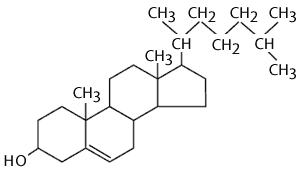Fats are always a needed factor in out body. Total fat content in human body is about 27%. They help in increasing nutrient absorption, transmission of nerve impulse, maintaining cell membrane integrity, gain in weight, and also sometimes responsible for certain heart diseases.
Where is fat generally stored?
In men, fat is stored in the middle of the body, in the stomach region, whereas women store fat around their pelvis, thighs and butt regions.
Fats are generally good and bad fats when fatty acids are classifieds.
Bad fats include the Saturated fats and the Trans fats.
Saturated fats – These are the fats which are responsible for raising the total cholestrol level as well as the Low-Density-Lipoprotein cholesterol.
These are found in animal products such as meat, eggs, dairy products and seafood.
Plant products which have saturated fats are coconut oil, palm oil and palm kernel oil, which all contain high content of saturated fats in them.
Trans fats – These are formed when the liquid oils are hydrogenated. Hydrogenation process is done to increase the shelf life of the food. Due to this, trans fatty acids are found in packaged foods, commercially fried foods. Some fried foods include french fries, fast food chains, and other snacks such as microwaved popcorns.
Good fats include the Monounsaturated fats and polyunsaturated fats.
Monounsaturated fats – These fats lower the total cholestrol and Low-density-lipoproteins cholesterol. These increase the High-density-lipoproteins, which is the good cholestrol. Foods which contain high amount of monosaturated fats are Nut, canola oil and olive oils.
Polyunsaturated fats – These also lower the total cholesterol and LDL cholesterol. Sea food such as salmon and fish oil, corn, soy, safflower and sunflower oils are high in polyunsaturated fats. One of the most essential fatty acid “Omega 3” fatty acids belongs to this polyunsaturated fat group.

Significant differences exist between men and women in the clinical presentation of heart attack and in the response to treatment. Women having a heart attack are likely to be older and have a higher incidence of high blood pressure, diabetes, high cholesterol, and congestive heart failure than do men.